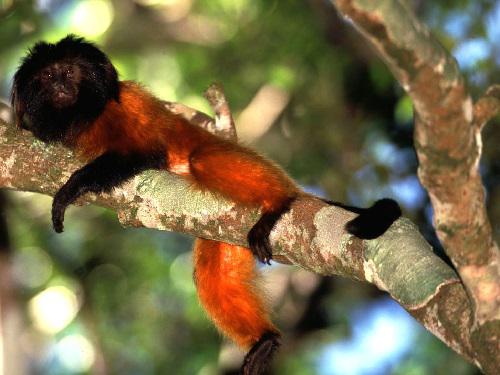Milene Martins
The unbalance nature of our current sampling precludes finding reliable conclusions about genetic structure and dispersal pattern of an endangered primate species. We will enlarge sample size and go on analysing data in order to provide guidance to conservation actions.

Adult male black-faced lion tamarin. © Marcos Amend.
The target of this study is to evaluate the genetic structure and dispersal patterns of two populations of the black-faced lion tamarin (Leontopithecus caissara) in south-eastern Brazil. The construction of a navigation channel within the geographic range of this primate species apparently blocked genetic interchange between populations. Both mainland and Superagüi Island population size are very reduced, what may enhance the pervasive effects of the genetic drift and inbreeding. The management plan for lion tamarins recommends translocation of groups as a tool for re-establishing gene flow.
Such conservation effort will certainly be more successful if accompanied by genetic investigations. Genetic analysis of 10 and 34 individuals (mainland and island, respectively) were performed through seven microsatellite markers and revealed significant difference between island and mainland populations. However, the unbalance nature of the sampling may have effects on this preliminary result and may compromise the reliability of the evaluation of dispersal patterns. In order to enlarge sample size at mainland, we intend to capture and collect blood samples from 12 animals. This project will add a genetic dimension to the ongoing efforts to understand the ecology, demography, and natural history of the black-faced lion tamarins. Data generated will provide improvements to the management plan.